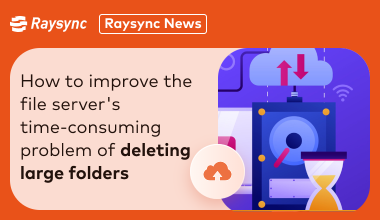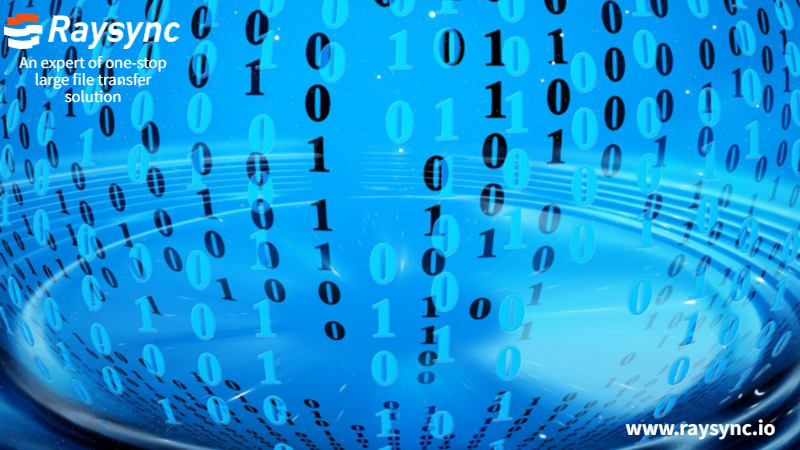How to Solve the Challenges of Modernizing Healthcare Data Transfer?
In our increasingly digital age, the transfer of files has become a vital component in every sector, including the healthcare industry. For hospitals, clinics, and other health care providers, the accurate and quick transmission of medical files, ranging from patient records, laboratory results to radiographic data, can determine the quality of care delivered. The ability to share and receive substantial quantities of data efficiently not only expedites decision making processes but can also save lives.
However, this is not a simple process. File transfer within the medical sector presents several challenges and requires expert handling. From ensuring absolute data security to compliance with legal regulations such as the Health Insurance Portability and Accountability Act (HIPAA), these challenges can make file transfer in health care a complex matter. The purpose of this article is to explore the intricate dynamics of file transfer in the health care sector, focusing on its current state, inherent challenges, and effective solutions.
Part 1. A few characteristics of the current state of file transfer in the healthcare industry
- Digitalization: With the advancement of healthcare informatics, file transfer in the healthcare industry is increasingly digitized, as seen in electronic medical records, medical imaging data, etc.
- High-security demand: The healthcare industry involves a large amount of personal privacy and sensitive information, such as patient identity information, medical records, etc. This means the requirements for security and privacy protection in the file transfer process are very high.
- Large Transfer Volume: With the continuous development of medical technology, especially the application of medical imaging technology like CT and MRI scans, the amount of data generated is massive. This places greater demands on the speed and efficiency of volume file transfer.
- Extensive Cloud Storage Application: To enable remote transfer and sharing of medical files, cloud storage technology is widely used in the healthcare industry. With cloud storage, doctors can remotely view and analyze patient medical files, greatly improving work efficiency.
- Standardization and Unification Demand: The state of file transfer in the healthcare industry is trying to converge and coexist with different communication standards between systems. This situation calls for standardization and unification in healthcare file transfers.
- Compliance: File transfers in the medical industry need to meet a series of strict regulations and standards, such as HIPAA, posing certain challenges to large file transfers.
Part 2. Challenges of File Transfer in the Healthcare Industry
- Security: Medical information contains personal privacy data, such as medical records, diagnostic results, and other sensitive information. If these data fall into the wrong hands, they might be used for unlawful purposes. Hence, ensuring the security of data during transmission and preventing illegal tampering or theft of the data becomes a significant challenge.
- Efficiency: Medical data files, especially those involving medical imaging, often involve large data volumes. This sets high demands on the speed and efficiency of the file transfer.
- Compatibility: Various hardware devices and software systems used by different medical institutions generate different data formats and transfer protocols, bringing difficulties in data exchange and sharing.
- Regulatory Compliance: Data transfer in the healthcare industry must comply with HIPAA and various other stringent data security regulations. Meeting these regulations is a challenge for many healthcare institutions.
- Data Management: With the abrupt increase in data volume, how to effectively manage, store and back up these data files, and ensure data loss prevention, presents another major challenge.
- Cloud Storage and Sharing: While cloud storage technology brings considerable convenience, it also brings new challenges, including data security issues, data synchronization updates, and permission allocation problems.
Part 3. Efficient File Transfer Software Boosts Healthcare Data Industry – Raysync
Facing these challenges, the medical industry needs to adopt effective solutions for file transfer. It is necessary to strengthen data security measures, adopt more advanced technologies to improve data transfer speed, implement the standardization and unification of data transfer, to face the increasingly complex medical environment. Raysync, as an advanced large file transfer software, improves the transfer efficiency and security of the medical industry with its high-speed, secure transmission speed.
- Efficient transmission:Raysync utilizes advanced data transfer protocols and optimized algorithms to achieve high-speed and stable data transmission. The high-speed and stable data transfer enables faster processing of medical data, improving the efficiency of healthcare professionals. Doctors can access patient medical images, electronic health records, and other information more quickly, allowing for faster diagnosis and treatment planning.
- High encryption:Employing internationally advanced encryption algorithms such as TLS 1.3, data can be encrypted during transfer. Strong data encryption technology ensures the security of medical data during transfer, preventing data breaches and hacker attacks. This helps protect patient privacy and maintain the reputation of healthcare institutions. Additionally, Raysync supports various encryption protocols, allowing for the selection of appropriate encryption methods based on different scenarios. By improving efficiency and enhancing data security, healthcare providers can offer higher quality and more accurate medical services. This, in turn, enhances patient satisfaction, trust, and ultimately elevates the reputation and competitiveness of healthcare organizations.
- Robust fault tolerance mechanism:Raysync has a robust fault tolerance mechanism that automatically recovers data transfer in the event of network fluctuations or device failures. This ensures that medical devices are not affected by interruptions in data transmission during operation.
- Seamless integration:Raysync seamlessly integrates with other healthcare information systems, allowing high-speed data sharing and exchange without changing existing usage habits.
- Cost reduction:By optimizing the data transmission process and reducing network bandwidth costs, Raysync can effectively reduce operational costs for healthcare institutions.
Final Word
In the healthcare industry, where time is critical and data confidentiality is paramount, Raysync emerges as a game-changer. By revolutionizing file transfer processes, it empowers medical professionals to enhance collaboration, streamline workflows, and improve patient care outcomes. With its lightning-fast speeds, ironclad security measures, seamless integration, and scalable solutions, Raysync proves to be a valuable asset for the healthcare sector, ensuring efficient and secure management of sensitive medical files. Embrace Raysync today and leverage its power to optimize large file transfer operations, ensuring excellence in healthcare delivery.
You might also like

Raysync News
March 22, 2024How to improve the file server's time-consuming problem of deleting large folders
Handling many files or large folders has become a daily task on file servers. To face this problem, Raysync utilizes its innovative file transfer technology to efficiently handle issues such as the deletion of large folders.
Raysync News
November 17, 2023What are the concerns of large file transfers across borders?
Large file transfers are becoming increasingly important in multinational organizations. So, how to achieve secure cross-border large file transfer and what are the key points to keep in mind?

Raysync News
July 8, 2022Top Managed File Transfer (MFT) Software 2022
Managed file transfer software is a more reliable and efficient means for secure data and file transfer, outpacing and outperforming applications.